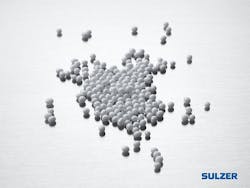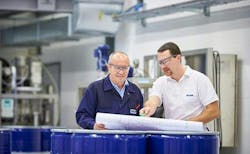PET Foams: Are They Difficult to Produce?
While polyethylene terephthalate (PET) foams can provide an advantageous alternative to polystyrene (PS) foams, their production process presents challenges that can prevent their adoption. By modifying the traditional foaming equipment, it is possible to overcome the obstacles in PET foaming as well as increase the overall process efficiency.
PET foams have the potential to replace PS foams and become one of the most common materials in the near future. Thanks to their properties, PET foams are suitable for a variety of applications, including food packaging, wind turbines, and pipe insulation.
More precisely, compared to the most common and widely used PS foams, PET is economical and lightweight, has good mechanical and thermal insulation properties, has higher temperature resistance, is safer and has a lower toxicity, is more easily recyclable, and has a lower carbon footprint.
Despite these advantages, the repeatable production of stable, homogeneous PET foams can be challenging, discouraging manufacturers from choosing this material. Firstly, foaming of PET requires the incorporation of additives, such as chain extenders, into the polymer. In addition, the equipment used needs to be designed for high temperatures, because the melting point of PET is around 482°F (250°C).
Also, the processing equipment must remain stable at the chosen temperature, as temperature overshooting can lead to thermal degradation of the polymeric chains, heavily affecting the final mechanical properties of the foam. Finally, optimal foaming is achieved near the crystallization temperature of PET, and therefore temperature undershooting would lead to a solidification of the polymer inside the system and a stop of production.
While optimal control over temperatures and mixing is required, this cannot easily be achieved with the traditional extrusion process, used for the production of foams from PS and other polymers.
Extrusion Design
The traditional foaming equipment consists of one long extruder where a number of tasks are performed: the polymers are melted and mixed with gas, to create a homogeneous solution, and the structure is cooled and pushed through a die. These actions require different temperatures, i.e. the extruder needs to melt the material and then cool it down to reach the foaming temperature, which is usually lower than the melting point temperature. To be able to do this in the same machine, a slow turning speed of the extruder screws is needed to avoid excessive heat generation by the friction between melt, screws, and housing. This leads to strong limitations in the maximum throughput that can be achieved with traditional foaming equipment.
While the use of only one piece of equipment may suggest a lean production process, this design is not optimized for either energy and cooling efficiency or mixing or homogenizing.
An effective solution, like the one developed at Sulzer Chemtech, exists in separating the different tasks into two different pieces of equipment: the extruder to melt and mix and the melt cooler to cool the temperatures over the cross-section. Every variation in composition and temperature will be greatly magnified by the foaming at the exit of the die. Regions of the cross-section with higher temperatures will result in foam with larger bubbles, and vice versa, leading to inhomogeneous products. Therefore, great care is taken to maintain a homogeneous melt in the most efficient way.
Specifically, a static cooler after the extruder can reduce the temperature of the melt in a way that is quicker, more energy efficient, and more stable, enabling it to reach the point set by the machine operator. The temperature in the cooler is controlled by a heat-transfer fluid (thermal oil) that allows a much more precise adjustment of the temperature without overshooting or undershooting the set point.
Consequently, the addition of a homogenizer after the cooler offers a more uniform temperature before the foam exits through the die, providing optimal foaming results. The thermal oil-based heating/cooling system across the homogenizer and the die empowers operators to have optimal control over the temperature, the variation of which cannot be greater than 0.5°C.
In addition, the design of the screws in the extruder can also be improved to enhance the melting speed and the homogenization. Parts with higher conveying capabilities can be alternated with ones that enable mixing of the polymer with the additives. This modular design can lead to maximum throughput, the complete reaction of PET with a chain extender, mixing of additives, and solubilization of blowing agent.
Proven Results
This new extrusion equipment, as redesigned by Sulzer Chemtech, allows the production of high-quality PET foams. On a microscopic level, the material produced is homogeneous, characterized by a closed cell structure and a fine cell morphology, even in low-density foams. These properties contribute to optimizing the foam’s mechanical resistance and thermal conductivity. Furthermore, by improving the efficiency of the mixing process, the amount of additives required is greatly reduced.
By developing a method that allows the repeatable production of stable, homogeneous PET foams, Sulzer Chemtech makes the transition towards more sustainable, efficient foams easier, empowering industries to produce PET foam sheets, boards, pipes and beads that can replace existing polymeric foams while improving the overall foam properties and performances.
Daniele Tammaro is an R&D engineer at Sulzer Chemtech Ltd.
About the Author



